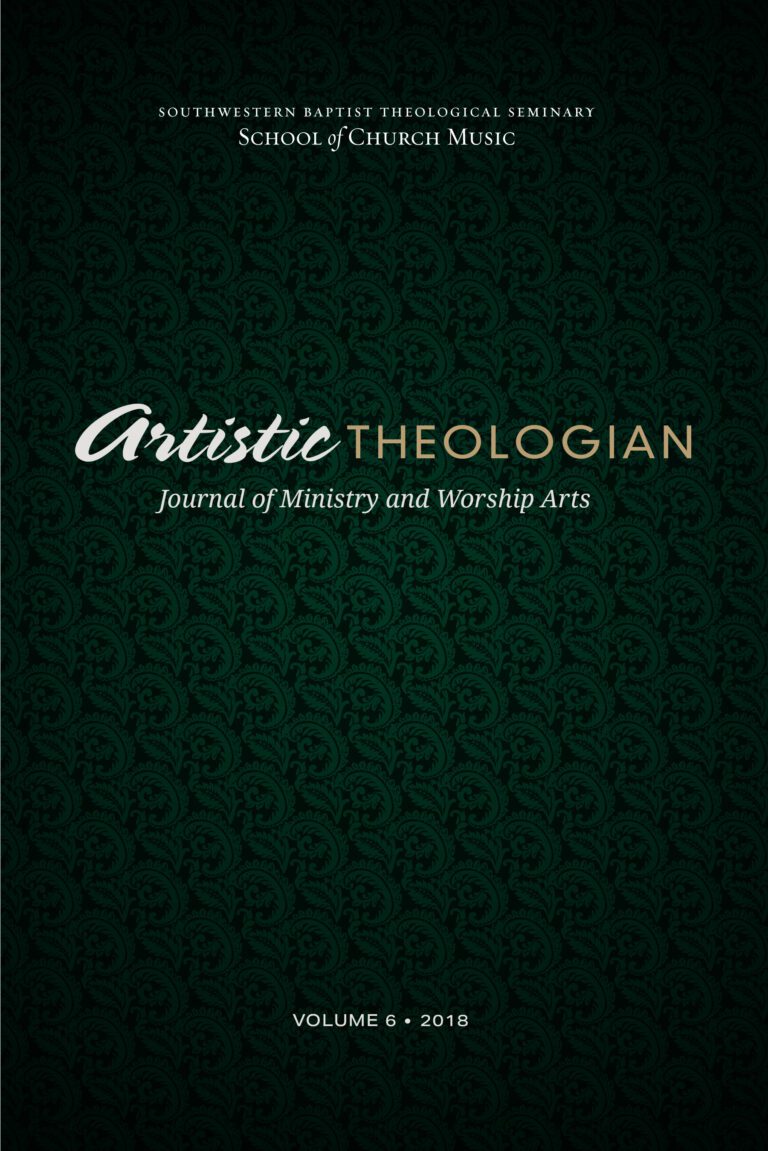
When We Come Together
Artistic Theologian
Volume 6, Summer 2018
Editor-in-Chief: Scott Aniol
The Presence of God: Its Place in the Storyline of Scripture and the Story of Our Lives, by J. Ryan Lister. Wheaton, IL: Crossway Publishing, 2015. 367 pp. $15.58.
“Like mountaintops ascending above the mist, Genesis and Revelation afford us with spectacular views of God’s presence” (87). Professor J. Ryan Lister of Portland, Oregon’s Western Seminary follows in the footsteps of Brother Lawrence (Practice the Presence of God), A. W. Tozer (Experiencing the Presence of God), and countless others in writing about the omnipresence of God working in the life of the believer. The redemptive-historical argument of this book works to prove that the presence of God is a “fundamental objective in our redemption” (24). Lister manages to do this in an elegant and innovative way by framing the entire argument within a template of theatrical terminology to better illuminate the presence of God, much like a protagonist in a grand theatrical production.
With the book divided into four sections titled “Fade to Light,” “Enter Stage Left,” “Standing in the Spotlight,” and “Curtain Calls,” Lister creates a chronological view of God’s interaction with creation, the Hebrews, the Acts 2 church, and the present day. The author’s Old Testament skills in the first half of the book are noteworthy as he takes the reader on a brisk, yet comprehensive, walk through the history of the Old Testament while hinting of something to come. In fact, page 128 gives the reader the first mention of Jesus Christ, with his presence firmly felt in the second half of the book. The final thirty pages give strong application for the twenty-first-century believer. This tithe of the book may seem like a few pages, however, it is very strong in material dealing with the subjects of sanctification and church discipline. I appreciated his view of the Church as “the Temple” (310) with his theory being if the regenerate serve as the Temple of God, then the church full of believers must ipso facto serve as the Temple. This pattern of thought serves as a strong remonstration to current local churches.
As stated earlier, the Old Testament work in this book walks a fine line between brevity and diligence. As Lister watches God, like an audience member waiting for the fourth wall to be broken toward the end of a play, he gives a thorough understanding of the presence of God and its redemptive qualities. Perhaps it is because of this extreme single-mindedness that Christ is not mentioned and barely alluded to in the first one hundred pages. In a historical view of God’s presence, this can be somewhat forgiven, yet it would have added “more tension to the plot” if the text could have carried a more incarnational tone.
Though concision is crucial for the tone of this book, it was surprising that the subject of Abraham’s sacrifice of a ram, which alludes to Christ’s sacrifice, was only mentioned in a footnote. There is also little formal reference to the Holy Spirit. The omission is probably again due to a laser-like focus on the subject of the presence of the Father member of the Trinity.
The presence of God is made manifest in this writing until the very last page, fulfilling the objective and very title of the book. There may be some changes in perspective that could have helped the reader to gain a more Trinitarian point-of-view of God as the “completion of our salvation” (323); however, the doctrinal platform upon which this book stands is indisputable.
The Presence of God is solid reading for the maturing Christian. It is also good material for any pastor wishing to approach the study of Scripture from a chronological standpoint while retaining a systematic approach, which is not an easy task. By Lister’s writing style, it seems that he wanted to appeal to a more general audience; however, that may not materialize as the subject matter is weighty at times. This is unfortunate as the final thirty pages certainly have thought-provoking material for the modern Christian coupled with very real application, but the previous three hundred pages are crucial in the development of the author’s thesis. I am pleased to have added The Presence of God to my library, and it will no doubt be beneficial as a reference on the redemptive-historical study of the Old Testament for some time to come.
John Francis
Hannibal–LaGrange University





